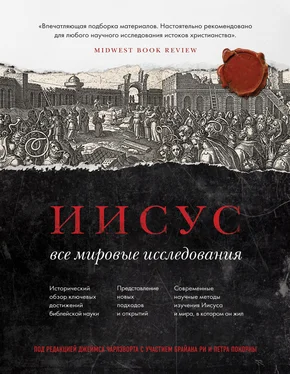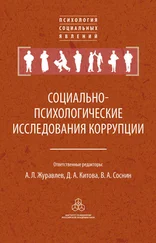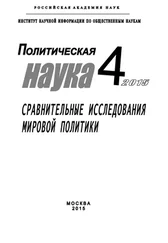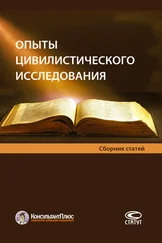Лк 2:1–2; 3:1–2; Деян 18:12; см., напр.: Luke Timothy Johnson, «Luke- Acts, Book of», ABD 4:403–420, цит. с. 406.
См., напр., аргументы в издании: Johnson, «Luke- Acts », с. 406.
См.: Darryl W. Palmer, «Acts and the Ancient Historical Monograph», в кн.: Acts , ed. Winter and Clarke, с. 1–29, цит. с. 3; Mikeal C. Parsons, «The Unity of Luke-Acts: Rethinking the Opinio Communio », в кн.: With Steadfast Purpose: Essays on Acts in Honor of Henry Jackson Flanders Jr. (ed. N. H. Keathley; Waco, Tex.: Baylor University Press, 1990), с. 29–53, особенно с. 45–48.
См., напр.: M. D. Goulder, Type and History in Acts (London: SPCK, 1964); Charles H. Talbert, Literary Patterns, Theological Themes, and the Genre of Luke-Acts (SBLMS 20; Missoula, Mont.: Scholars Press, 1974); Robert C. Tannehill, The Narrative Unity of Luke-Acts: A Literary Interpretation (2 vols.; Philadelphia: Fortress, 1986–1990).
Burridge, What Are the Gospels? с. 246 (цит. Диод. Сицил. 17); David L. Balch, «ΜΕΤΑΒΟΛΉ ΠΟΛΙΤΕΙΏΝ – Jesus as Founder of the Church in Luke-Acts: Form and Function», в кн.: Contextualizing Acts , ed. Penner and Vander Stichele, с. 139–188, цит. с. 143 (цит.: Дионисий Галикарнасский, Рим. древн 4.41–85).
См., напр.: Плиний, Письма 1.16.4; Stefan Rebenich, «Historical Prose», в кн.: Handbook of Classical Rhetoric in the Hellenistic Period 330 B.C. – A.D. 400 (ed. S. E. Porter; Leiden: Brill, 1997), с. 265–337; особенно Clare K. Rothschild, Luke-Acts and the Rhetoric of History: An Investigation of Early Christian Historiography (WUNT 2/175; Tübingen: Mohr Siebeck, 2004).
См., напр.: Аппиан, Рим. ист 7.8.53; Плутарх, Демосфен 3.2; Серторий 1.1; далее об этом см.: John T. Squires, The Plan of God in Luke-Acts (SNTSMS 76; Cambridge: Cambridge University Press, 1993).
Кимон 3.1–3.
Серторий 1.1. Цицерон в речах допускал большую свободу ( Брут 11.42), а «Собрание параллельных греческих и римских историй» псевдо-Плутарха ( Мор 305А–316B) часто предлагают параллели столь близкие, что не приходится сомневаться в «творческой переработке» материала автором.
См., напр.: Сравн. Алк. Кор 3.1; Сравн. Лис. Сул 5.5. Даже когда Плутарх гиперболически заявляет, что те или иные два персонажа почти неразличимы ( Сравн. Арист. Кат 1.1), на самом деле он видит и замечает различия между ними (5.1, 3–4; 6.1).
Ср., напр., типологию библейского исхода, скажем, в кн.: David Daube, The Exodus Pattern in the Bible (All Souls Studies 2; London: Faber & Faber, 1963); Richard B. Hays, Echoes of Scripture in the Letters of Paul (New Haven: Yale University Press, 1989), с. 101; о типичных сюжетных ходах, прежде воспринимавшихся как дублеты, см., напр.: Philip E. Satterthwaite, «Acts Against the Background of Classical Rhetoric», в кн.: Acts , ed. Winter and Clarke, с. 337–379, цит. с. 363.
Об интерпретативной функции речей см., напр.: Henry J. Cadbury, The Making of Luke-Acts (London: SPCK, 1968), с. 185; Eckhard Plümacher, Geschichte und Geschichten: Aufsätze zur Apostelgeschichte und zu den Johannesakten (ed. J. Schröter and R. Brucker; WUNT 170; Tübingen: Mohr Siebeck, 2004), с. 109–126; об их композиции см., напр.: Dibelius, Studies in Acts , с. 138–185.
См.: Cadbury, Making , с. 186–187; Conrad Gempf, «Public Speaking and Published Accounts», в кн.: Acts , ed. Winter and Clarke, с. 259–303, цит. с. 264, 283, 299; также о переписывании речей, приведенных у более ранних историков, см.: Fornara, Nature of History , с. 143–168; Nigel G. L. Hammond, «The Speeches in Arrian’s Indica and Anabasis», CQ 49.1 (1999): 238–253.
О современных философских предпосылках для такого подхода см., напр., дискуссию в кн.: Pierre Benoit, Jesus and the Gospel (trans. B. Weatherhead; 2 vols.; vol. 1, New York: Herder & Herder, 1973; vol. 2, New York: Seabury, 1974), 1:39; Howard Clark Kee, Miracle in the Early Christian World: A Study in Sociohistorical Method (New Haven: Yale University Press, 1983), с. 3–16; John P. Meier, A Marginal Jew: Rethinking the Historical Jesus , vol. 2: Mentor, Message, and Miracles (ABRL; New York: Doubleday, 1994), с. 519–520; подробнее: Brad S. Gregory, «The Other Confessional History: On Secular Bias in the Study of Religion», History and Theory , Theme Issue, 45 (Dec. 2006): 132–149; Craig Keener, Miracles: The Credibility of the New Testament Accounts (2 vols.; Grand Rapids: Baker Academic, 2011); idem, «A Reassessment of Hume’s Case against Miracles in Light of Testimony from the Majority World Today», PRSt 38.3 (Fall 2011): 289–310. Незападные подходы зачастую значительно отличаются; см., напр.: Lamin Sanneh, Whose Religion Is Christianity? The Gospel beyond the West (Grand Rapids: Eerdmans, 2003), с. 26; Philip Jenkins, The Next Christendom: The Coming of Global Christianity (New York: Oxford University Press, 2002), с. 122–131; Craig Keener, «Cultural Comparisons for Healing and Exorcism Narratives in Matthew’s Gospel», HTS/TS 66 (2010); idem, «Spirit Possession as a Cross-Cultural Experience», BBR 20 (2010): 161–182.
См., напр.: Фукидид 1.22.4; Полибий 7.7.1; см сообщения о знамениях (у многих историков, включая Ливия) и о знаках (возможно, пропаганда в духе Флавия у Тацита, Ист 4.81; Светоний, Веспасиан 7.2–3). Иосиф Флавий пишет о сверхъестественном в достаточно бесстрастном ключе, однако хочет, чтобы читатели верили его рассказам о чудесах: см.: Otto Betz, «Miracles in the Writings of Flavius Josephus», в кн.: Josephus, Judaism and Christianity (ed. L. H. Feldman and G. Hata; Detroit: Wayne State University Press, 1987), с. 212–235, цит. с. 212–213.
Экхард Плюмахер (Eckhard Plümacher, «ΤΕΡΑΤΕΙΑ: Fiktion und Wunder in der hellenistisch-römischen Geschichtsschreibung und in der Apostelgeschichte», ZNW 89 [1998]: 66–90) сравнивает Луку с «сенсационными» историками; однако, несмотря на интерес Луки к знамениям, ему недостает риторической утонченности и большинства драматически-трагических элементов, характерных для сочинений этого рода.
Читать дальше

![Коллектив авторов - Что мы думаем о машинах, которые думают [Ведущие мировые ученые об искусственном интеллекте]](/books/31211/kollektiv-avtorov-chto-my-dumaem-o-mashinah-kotorye-thumb.webp)










